Disclosure: This article contains affiliate links. We may earn a commission from purchases at no extra cost to you, which helps our travel content.
There's something almost transcendent about Singapore's hawker centers—these bustling culinary ecosystems represent perhaps the most efficient food delivery system I've encountered in my global travels. As someone who analyzes systems for a living, I find myself utterly captivated by how these microcosms of Singaporean innovation manage to serve thousands of delectable dishes daily with remarkable precision and at astonishingly accessible price points. Having visited Singapore quarterly for business over the past decade, I've developed what my Singaporean colleagues jokingly call my 'hawker center algorithm'—a methodical approach to experiencing the island's diverse culinary landscape. Whether you're visiting for 48 hours or a full week, this guide will help you navigate Singapore's food scene like a seasoned local, not a hurried tourist. Prepare your taste buds (and perhaps a loose-fitting wardrobe) for an unforgettable gastronomic adventure that transcends mere sustenance and offers profound insights into Singapore's multicultural identity.
Understanding the Hawker Center Ecosystem
Before diving into specific recommendations, it's worth understanding what makes hawker centers such a fascinating cultural institution. These open-air complexes house dozens (sometimes hundreds) of independent food stalls under one roof—a brilliant solution that emerged in the 1970s when the government began regulating street vendors for hygiene purposes.
What strikes me as particularly ingenious is how these centers represent Singapore's commitment to preserving cultural heritage while embracing modernization. Each stall is essentially a micro-business, often family-run, with recipes passed down through generations. The pricing structure remains remarkably democratic; a Michelin-starred meal can be had for under S$5 (roughly £3).
During my consulting work with tech startups in Singapore, I've observed how the hawker center model mirrors certain aspects of successful innovation hubs—specialized vendors clustered together, creating an environment where excellence is both celebrated and expected. The competitive yet collaborative atmosphere pushes each hawker to maintain quality while keeping prices accessible.
While exploring these culinary wonderlands, I've found it invaluable to have a good reusable water bottle as Singapore's tropical climate demands constant hydration. Most centers have water coolers where you can refill, saving both money and plastic waste—aligning perfectly with Singapore's sustainability initiatives.
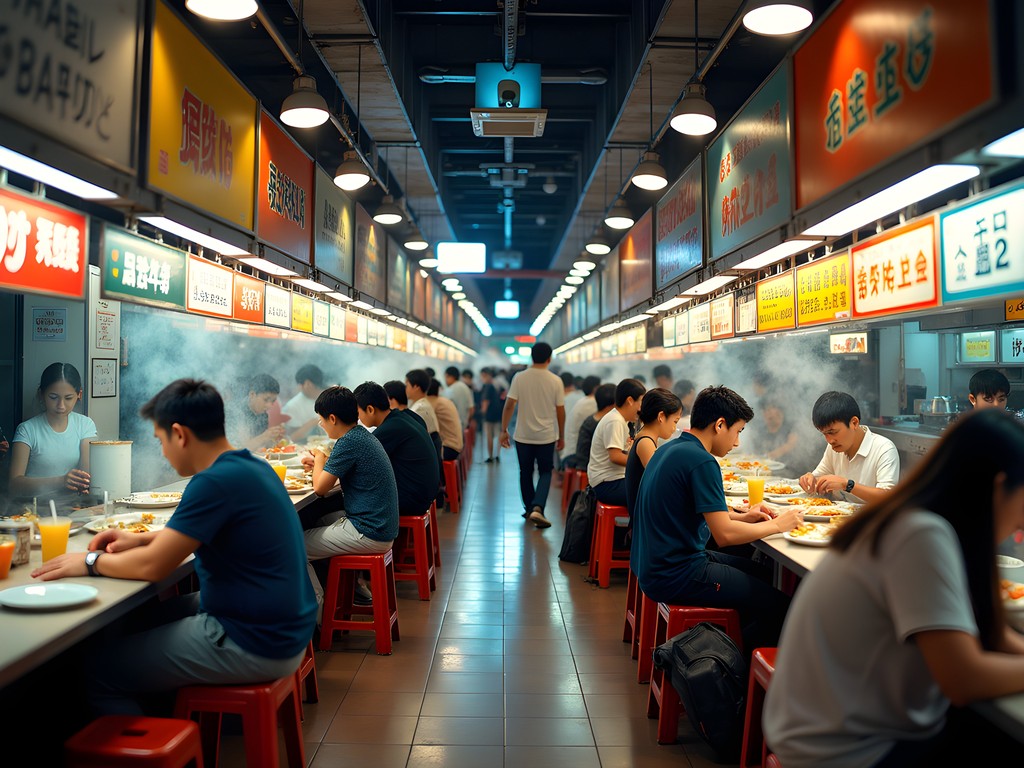
💡 Pro Tips
- Look for queues—they generally indicate the most popular stalls with locals
- Visit during off-peak hours (2-5pm) for shorter wait times and more seating options
- Bring small denominations of cash as many stalls don't accept cards
The Essential Hawker Centers: Where to Begin Your Culinary Journey
After methodically visiting over 30 hawker centers across Singapore, I've identified several that offer the perfect introduction to this culinary landscape. Each has its own distinct character and specialties worth exploring.
Maxwell Food Centre (1 Kadayanallur St) stands as my personal favorite for introducing newcomers to hawker culture. Located near Chinatown, it houses the famous Tian Tian Chicken Rice—a stall that caught the late Anthony Bourdain's attention. The chicken rice here exemplifies Singapore's obsession with perfecting seemingly simple dishes; the tender poached chicken and fragrant rice represent culinary minimalism at its finest.
Tekka Centre in Little India offers a spectacular array of Indian and Muslim-Malay cuisine. The biryani options here are transcendent, particularly at Yakader's stall where the fragrant spiced rice comes served with succulent curried meats. The adjacent wet market provides fascinating insights into Singapore's food supply chain—something I always find illuminating from a systems perspective.
Old Airport Road Food Centre requires a slight detour from tourist districts but rewards visitors with what many locals consider the most comprehensive collection of Singaporean classics. The rojak (a fruit and vegetable salad with prawn paste dressing) at Toa Payoh Rojak consistently draws queues for good reason—the perfect balance of sweet, sour, and umami flavors.
Tiong Bahru Market offers a more gentrified hawker experience in a trendy neighborhood. The second floor houses excellent stalls serving chwee kueh (steamed rice cakes topped with preserved radish) and lor mee (noodles in a thick gravy). After eating, I often explore the surrounding art deco architecture—a perfect example of how Singapore preserves its heritage while evolving.
For those wanting to document their food adventures, I recommend a compact camera that handles low light well and won't disturb other diners with a large setup. Singapore's hawker centers are visually compelling spaces, and capturing both the food and atmosphere adds another dimension to your experience.

💡 Pro Tips
- Visit Maxwell Food Centre early (before noon) to avoid missing out on popular stalls that sell out
- At Tekka Centre, explore both the food center and the adjacent wet market for a complete cultural experience
- Bring tissues or purchase napkins from tissue sellers—most hawker centers don't provide them
Must-Try Dishes: Beyond Chicken Rice and Chili Crab
While Singapore's internationally renowned dishes deserve their accolades, the true joy of hawker exploration comes from venturing beyond these familiar options. After years of systematic sampling (all in the name of research, naturally), I've compiled this list of lesser-known but equally magnificent dishes.
Char Kway Teow represents hawker cooking at its finest—flat rice noodles wok-fried at blistering temperatures with dark soy sauce, bean sprouts, egg, Chinese sausage, and cockles. The 'wok hei' (breath of the wok) imparts a smoky essence impossible to replicate at home. Hill Street Char Kway Teow at Bedok South Market makes my favorite version, with the perfect balance of savory and sweet notes.
Nasi Lemak, Malaysia's national dish but equally beloved in Singapore, features coconut rice served with sambal (spicy sauce), fried fish, peanuts, cucumber, and a fried egg. The version at Boon Lay Power Nasi Lemak in Jurong West exemplifies how seemingly simple ingredients can create a harmonious flavor profile when properly executed.
Roti Prata showcases Singapore's Indian influence—a flaky, ghee-enriched flatbread typically served with curry. Mr. and Mrs. Mohgan's Super Crispy Roti Prata in Joo Chiat serves what many consider Singapore's best, with a crispy exterior giving way to soft, chewy layers within.
Bak Kut Teh (pork rib soup) comes in two distinct varieties in Singapore: the peppery Teochew style and the herbaceous Hokkien version. Founder Bak Kut Teh near Bugis offers an excellent introduction to this comforting dish, particularly welcome during Singapore's occasional rainy days.
Carrot Cake (Chai Tow Kway) bears no resemblance to the Western dessert—it's actually stir-fried cubes of radish cake with eggs, preserved radish, and dark soy sauce. He Zhong Carrot Cake at Bukit Timah Market makes both the white (original) and black (with sweet soy sauce) versions to perfection.
To track your hawker adventures, I've found using a food journal particularly useful. Mine has become an invaluable record of discoveries across Singapore's hawker landscape, complete with stall locations, dish recommendations, and personal ratings that I reference on each return visit.

💡 Pro Tips
- Order dishes from stalls specializing in just one or two items—specialization often indicates mastery
- Ask for less spice initially if you're sensitive to heat; you can always add more chili
- Look for stalls with photos or displays of certification/awards—many have been recognized for their excellence
Navigating Hawker Center Etiquette and Practical Matters
Understanding the unwritten rules of hawker centers will enhance your experience immeasurably. Having committed numerous faux pas during my early visits (including the cardinal sin of leaving my belongings to 'chope' or reserve a table without using the locally accepted tissue packet method), I'm eager to spare you similar embarrassment.
Seating Protocol: The 'chope' system is uniquely Singaporean—locals reserve tables by placing tissue packets or other small items on them before queuing for food. If you see a table with tissues or an umbrella but no people, it's already taken. During peak hours, sharing tables with strangers is perfectly normal and expected.
Ordering Process: Most stalls display clear menus, often with pictures. Simply queue, order, and pay at the stall. Some vendors will deliver to your table if you provide your table number; others expect you to wait. When in doubt, observe what locals ahead of you are doing.
Tray Return: Singapore has implemented a tray return system at most centers. Look for designated return stations and follow the sorting instructions for sustainability purposes. There's often a small deposit (S$1) for trays that you'll get back upon return.
Dietary Considerations: Singapore is relatively accommodating to dietary restrictions. Look for Halal certification signs for Muslim-friendly options. Vegetarians should seek Indian stalls or specifically Buddhist vegetarian vendors. Those with celiac disease may find hawker centers challenging as soy sauce (containing wheat) is ubiquitous.
Hydration: Singapore's humidity demands constant hydration. Most centers have drink stalls selling everything from fresh sugar cane juice to traditional kopi (local coffee). I always carry my insulated water bottle which keeps water cold for hours in Singapore's tropical climate.
Payment: While cash remains king at hawker centers, Singapore's digital payment revolution has reached many stalls. The government's 'Hawker Go Digital' initiative has encouraged vendors to accept options like PayNow and NETS. However, having small denominations of cash remains advisable, particularly at older centers.
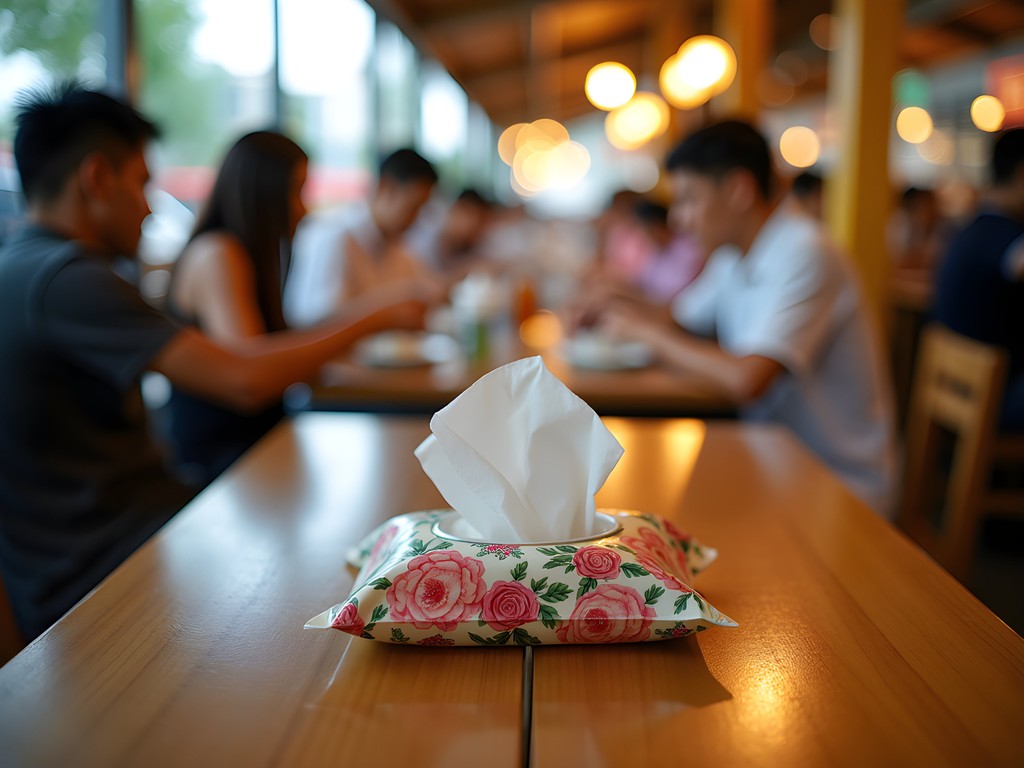
💡 Pro Tips
- Use the tissue packet 'chope' system to reserve tables during busy periods
- Learn basic phrases like 'da bao' (takeaway) and 'xie xie' (thank you) to facilitate communication
- Follow the locals' lead on where to queue and how to order at unfamiliar stalls
Seasonal Specialties and Festival Foods
While Singapore's equatorial climate means most hawker favorites are available year-round, certain seasonal specialties and festival foods offer fascinating insights into the cultural calendar. As someone particularly interested in how seasons influence cultural expressions, I've made it a point to align some of my business trips with these culinary events.
Chinese New Year transforms hawker centers with specialty items like yu sheng (prosperity toss salad) and nian gao (sticky rice cake). Even standard stalls may offer festive versions of their regular dishes. The symbolic importance of these foods—representing prosperity, longevity, and harmony—reflects Singapore's blend of pragmatism and tradition.
Ramadan brings spectacular Malay and Indian-Muslim offerings to hawker centers near Geylang Serai and Kampong Glam. The temporary Ramadan bazaars feature special items like dendeng (thinly sliced marinated beef) and various kuih (bite-sized snacks or desserts). Visiting during iftar (breaking of the fast) offers a powerful cultural experience.
Durian Season (typically June through August) divides visitors into passionate devotees and vehement opponents. This polarizing 'king of fruits' appears in various forms across hawker centers, though its distinctive aroma means it's often consumed at designated outdoor areas. My recommendation for first-timers: try durian in dessert form at Ah Chew Desserts in Bugis, where its potency is somewhat tempered.
Mid-Autumn Festival brings mooncakes and pomelos to markets adjacent to hawker centers. The traditional lotus seed paste mooncakes have been joined by contemporary versions with flavors ranging from champagne truffle to durian. Chinatown Complex Food Centre becomes particularly festive during this period.
Hungry Ghost Festival (seventh lunar month) features elaborate offerings and specialized vegetarian dishes at many hawker centers. This provides an excellent opportunity to explore Chinese vegetarian cuisine, which often creatively mimics meat dishes using plant-based ingredients.
For those interested in documenting these seasonal specialties and their cultural significance, I recommend a food photography guidebook. Learning to properly capture these ephemeral dishes has helped me better appreciate their artistry and cultural importance.
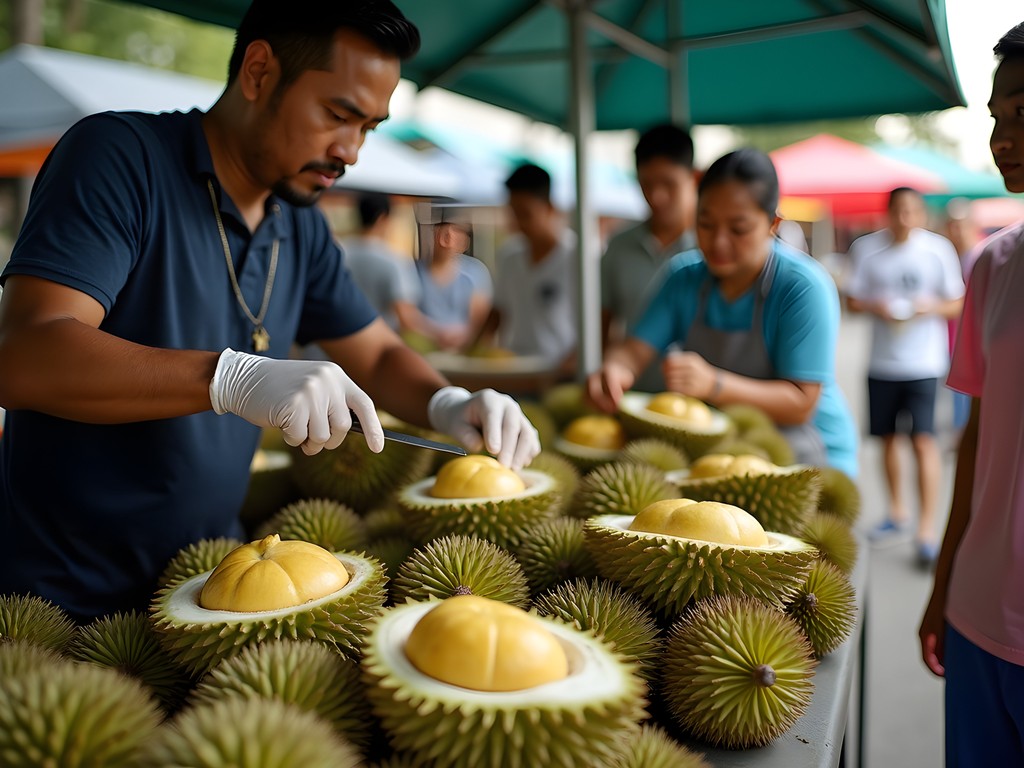
💡 Pro Tips
- Book accommodation near hawker centers during major festivals as transportation can become challenging
- Ask vendors about special festival items that may not appear on regular menus
- Respect religious sensitivities during festivals, particularly regarding photography of ceremonies
Final Thoughts
Singapore's hawker centers represent far more than convenient dining options—they're living museums of culinary heritage, innovation laboratories for flavor combinations, and democratic spaces where everyone from construction workers to corporate executives share tables and experiences. My systematic exploration of these vibrant food hubs has revealed that they embody Singapore's most admirable qualities: efficiency, cultural preservation, accessibility, and uncompromising standards. As you embark on your own hawker center safari, I encourage you to approach each meal with both analytical curiosity and childlike wonder. Notice how different ethnic traditions have influenced each dish, how vendors have optimized their operations over decades, and how the entire ecosystem functions as a masterclass in urban planning. What begins as a simple quest for affordable, delicious food will likely evolve into a profound appreciation for Singapore's unique cultural identity. When will you begin your hawker adventure?
✨ Key Takeaways
- Singapore's hawker centers offer world-class cuisine at remarkably affordable prices
- Look beyond famous dishes like chicken rice to discover lesser-known local specialties
- Understanding hawker etiquette enhances your experience and shows respect for local customs
- Seasonal festivals bring special dishes that provide deeper insights into Singapore's cultural calendar
📋 Practical Information
Best Time to Visit
year-round (specific festivals bring seasonal specialties)
Budget Estimate
S$3-8 per dish (approximately £2-5)
Recommended Duration
weekend (minimum 48 hours for proper exploration)
Difficulty Level
Easy
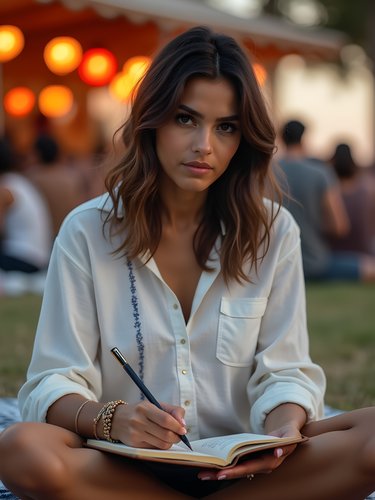
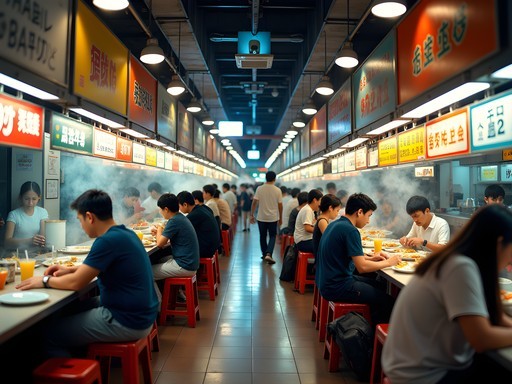














Comments
wanderadventurer
Is it true hawker center food is super cheap? What's a typical meal cost?
sunnyfan
SO affordable! Most dishes are between 3-6 Singapore dollars (roughly $2-5 USD). You can eat like royalty for $10-15 per person including drinks.
wanderadventurer
That's amazing! Thanks for the info!
luckynomad
Love this! Saving for my trip in November. Those tissue packets as table reservations still crack me up 😂
George Hayes
Fantastic guide, Naomi! When we took our kids (ages 8 and 10) to Singapore last year, the hawker centers were the highlight of our trip. They loved the 'choose your own adventure' aspect of it all. Pro tip for families: Maxwell Food Centre was perfect for us because it has so many options in one place - picky eaters can find something safe while adventurous eaters can try the famous Tian Tian chicken rice. Our strategy was to share 5-6 dishes between the four of us so everyone could sample different things. The kids still talk about the ice kachang dessert with all those colorful toppings!
adventureadventurer
Heading to Singapore next month for the first time! Any tips on how to spot the best stalls? Is it just look for the longest lines?
Mason Sullivan
Long lines are usually a good indicator, but also look for stalls with Michelin Bib Gourmand stickers! I used my food guide to find some hidden gems that locals love. Also, don't be afraid to ask locals for recommendations - Singaporeans are super proud of their food culture and love to share tips!
sunnyfan
This post brought back so many memories! The laksa at Old Airport Road still haunts my dreams 🤤
rednomad
OMG yes! That coconut broth is unreal. Did you try the carrot cake stall there too?
sunnyfan
Both black AND white! I actually preferred the black version. So good with the sweet soy sauce!
Timothy Jenkins
Naomi, this guide brought back so many memories! I spent a month in Singapore last year researching street food culture, and the hawker centers truly are culinary treasures. One hidden gem I'd add is Tekka Centre in Little India - incredible Indian and Malay options that often get overlooked. The murtabak there changed my life! For first-timers, I recommend visiting centers during off-peak hours (2-5pm) to avoid crowds and have more chances to chat with the hawkers themselves. Many have fascinating stories about recipes passed down through generations. Great post!
Naomi Bennett
Thanks Timothy! Tekka Centre is fantastic - I should have given it more attention in the post. The cultural diversity of Singapore's food scene is what makes it so special.
mountainexplorer
First time going to Asia next month and Singapore is our first stop. Is it easy to find vegetarian options in these hawker centers? Any specific recommendations?
smartqueen
Totally! Look for Indian stalls - they have amazing vegetarian options. The dosa at Tekka Centre was incredible. Also, many Chinese Buddhist stalls are fully vegetarian.
mountainexplorer
Thanks so much! That's really helpful!
Sage Dixon
What an excellent guide! Having eaten my way through Singapore three times now, I can confirm Naomi nailed the essentials. One adventure worth adding: I took a local food tour with an elderly gentleman who'd been eating at the same hawker stalls for 40+ years. He introduced me to Hokkien mee at this tiny stall in Chomp Chomp that had no English signage whatsoever. Sometimes the best finds are where tourists never venture! Also, don't overlook the drink stalls - the pulled tea (teh tarik) is an art form, and fresh sugar cane juice is perfect in that humidity. Tip: most hawker centers have seating areas with fans - in April heat, those spots are worth hunting for!
starlover
Love the photos! That chili crab looks amazing!
Frank Carter
Fantastic guide, Naomi! Having spent three months documenting Singapore's food scene last year, I'd add Old Airport Road Food Centre to your must-visit list - it's where many local chefs go on their day off. The char kway teow at stall #01-12 changed my understanding of what noodles could be. One thing I learned: don't just stick to the stalls with lines. Some of the best food is at places with zero queue because locals know exactly when to visit. I tracked all my meals in my food journal which helped me remember which stalls to revisit. The hawker center experience is truly what makes Singapore one of Asia's culinary capitals.
mountainexplorer
Is Old Airport Road easy to get to? Taking public transport or need taxi?
Frank Carter
Super easy! Dakota MRT station is right there (Circle Line). Singapore's public transport is incredible - I never took a taxi my entire stay.
Venture X
Premium card with 2X miles, $300 travel credit, Priority Pass